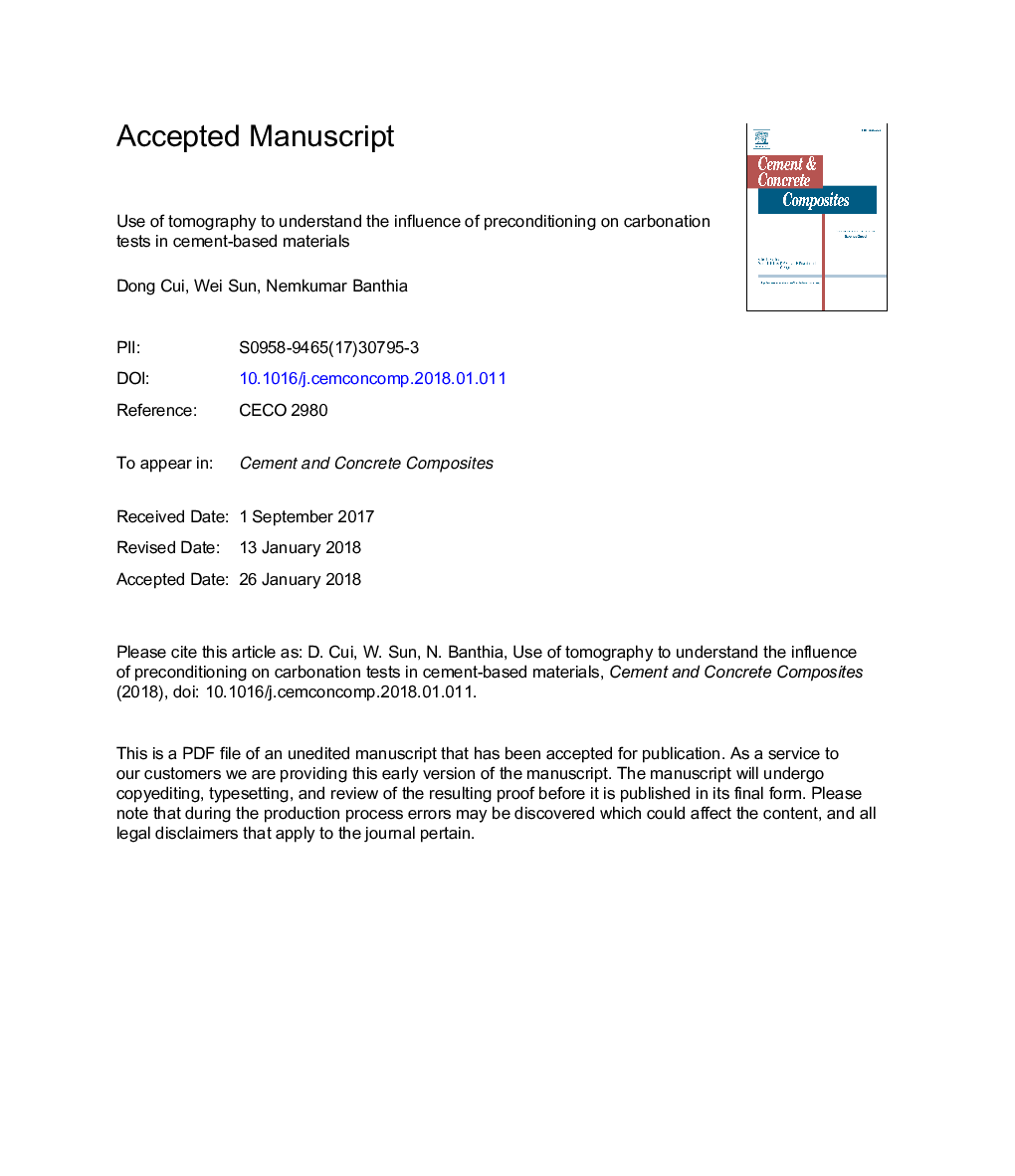| Article ID | Journal | Published Year | Pages | File Type |
|---|---|---|---|---|
| 7883839 | Cement and Concrete Composites | 2018 | 48 Pages |
Abstract
Recognition of the rising amount of atmospheric CO2 has brought renewed interest in understanding the effects of carbonation on reinforced concrete performance. In laboratory testing, the specimens must be preconditioned to effectively study carbonation. This paper studied the influence of several preconditioning schemes on the carbonation profiles of cement paste specimens subjected to accelerated carbonation tests. The evolution of microstructure and moisture during carbonation were investigated accordingly. Bulk of the work was based on an extended X-ray attenuation method (XRAM), which relied on X-ray computed tomography (CT). A novel method was introduced to evaluate the extent of damage due to drying. Based on extent of damage, the paper recommends standard-cured specimens for carbonation tests as compared to water-cured specimens. Also, when comparing between oven drying and mass balancing, the latter was shown to be more suitable, as the inner moisture distribution becomes more uniform after this drying protocol, and less fluctuation of humidity will occur during carbonation.
Related Topics
Physical Sciences and Engineering
Engineering
Industrial and Manufacturing Engineering
Authors
Dong Cui, Wei Sun, Nemkumar Banthia,
